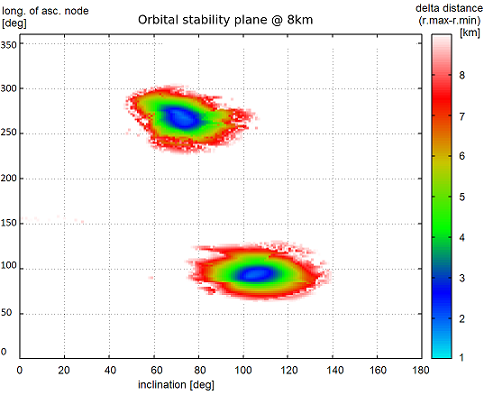Space-based analyses of the compositions of cosmic dust have been successfully performed using impact ionisation mass spectrometers during missions to comets (e.g. Stardust’s Cometary and Interstellar Dust Analyzer, [1]) and the Jovian and Saturnian systems (e.g. Cassini’s Cosmic Dust Analyzer, [2]). Impact ionisation mass spectrometry relies on the generation of plasma during the hypervelocity impact of a dust grain onto a metal target. The plasma is separated by an applied electric field and the component of choice – cation or anion – then accelerated through a drift or reflectron region, onto an ion detector. Owing to the unique plasma generation mechanism, the composition of the plasma cloud is typically related to the impact energy, and in particular the impact velocity. At lower impact velocities (~3-8 km/s), spectra are dominated by easily ionised species, such as the alkali and alkali earth metals in cation spectra, or hydroxide and halogens in anion spectra (e.g. [3,4]). In cation spectra, typically the most diagnostic when investigating rocky minerals, with increasing impact velocity (>8-12 km/s), elemental lines from, for example, Fe, Si and O begin to appear in spectra, together with molecular cations (e.g. [3,4,5]). Above ~20 km/s, the plasma composition stabilises such that laboratory-derived relative sensitivity factors can be used to quantitively identify specific minerals [6], but it is not currently known how well similar determinations can also be achieved at lower velocities.
Although the majority are not expected to be “active” dust emitters, asteroids are believed to be surrounded by a dust shroud generated by micrometeorite gardening of their surfaces [7]. Recently, Cohen et al. 2019 [8] have predicted that asteroid classes, via comparison with specific meteorite types, can be identified by measuring the compositions of a suitable sample of such a dust shroud. In that work, cluster analysis and Monte Carlo simulations were used to calculate the number of single mineral composition grains from different meteorite types that would be required to definitively identify them. Typically, very broad identifying traits for individual spectra were considered: “oxide”, “silicate”, “Fe-Ni metal”, “sulfide” or “phosphate”, together with the measured Fe/Mg ratio of the silicates. However, at the low flyby speeds (< 8 km/s) typical of missions to the main belt, reliable measurements of Fe/Mg ratios in spectra, or identification of oxide, sulfide or even some silicate grains, is currently extremely challenging.
To determine whether identifying and distinguishing between meteorites (and hence asteroid classes) can also occur using spectra typical of these low flyby velocities, we have analysed a collection of published meteorite bulk compositions, covering carbonaceous chondrites (CI, CM, CR, CV), ordinary chondrites (H, L, LL) and HED achondrite meteorites. Meteoritic abundances of minerals containing low ionisation energy elements (i.e. Na, Ca, Li, K, Ti, Cr, Mn, Zr and Ba, with ionisation energies <= 700 kJ/mol for the 7 km/s flyby speed case, and additionally Fe, Si, S, P, Cu, Co and Ni, with ionisation energies <=800 kJ/mol for the 9 km/s flyby speed case) together with Mg (known to appear in spectra from very low velocity impacts, e.g. [5]) and water/hydroxyl groups were determined. If suitable minerals were present at volume abundances >1 %, they were considered as candidates for discrimination. For the 7 km/s case, we find that the carbonaceous chondrites, ordinary chondrites and HED meteorites can be broadly distinguished between, with subtypes within the HED meteorites, and to a lesser extent, carbonaceous chondrites also individually identifiable. At 9 km/s, all three meteorite types, and their individual subtypes, can be readily identified and discriminated.
References
[1] Kissel, J. et al. (2003), Cometary and Interstellar Dust Analyzer for Comet Wild/2, JGR Planets, 108, E10, 8114.
[2] Srama et al. (2004), The Cassini Cosmic Dust Analyzer, Space Sci. Rev., 114, 465-518.
[3] Goldsworthy, B. J. et al. (2003), Time of flight mass spectra of ions in plasmas produced by hypervelocity impacts of organic and mineralogical microparticles on a cosmic dust analyser, A&A, 409, 1151-1167.
[4] Hillier, J. K. et al. (2014), Impact ionisation mass spectrometry of polypyrrole-coated pyrrhotite microparticles, Planet. Space Sci., 97, 9-22.
[5] Hillier, J. K. et al. (2018), Impact ionisation mass spectrometry of platinum-coated olivine and magnesite-dominated cosmic dust analogues, Planet. Space Sci., 156, 96-110.
[6] Fiege, K. et al. (2014), Calibration of relative sensitivity factors for impact ionization detectors with high-velocity silicate microparticles, Icarus, 241, 336-345.
[7] Szalay, J. & Horányi , M. (2016), The Impact Ejecta Environment of Near-Earth Asteroids, Ap. J. Lett., 830, L39.
[8] Cohen, B. A. et al. (2019), Using dust shed from asteroids as microsamples to link remote measurements with meteorite classes, MAPS, 54 (9), 2046-2066.


